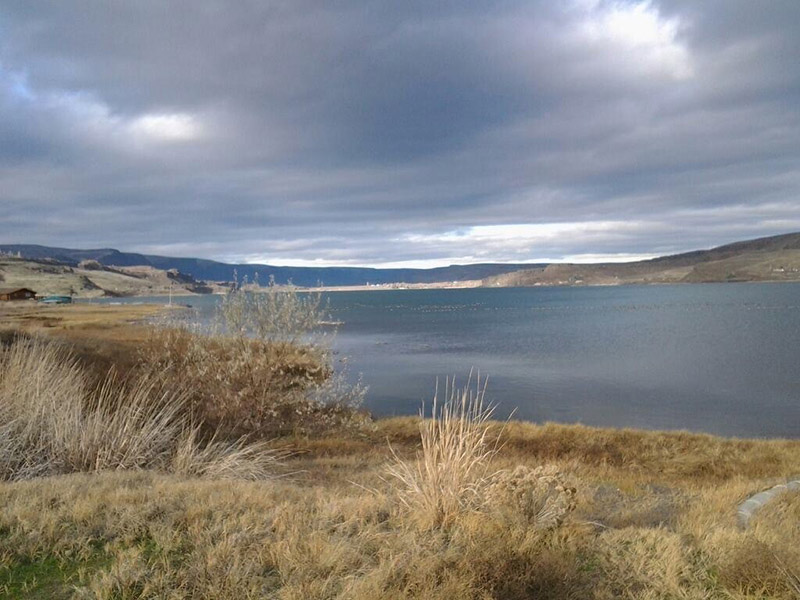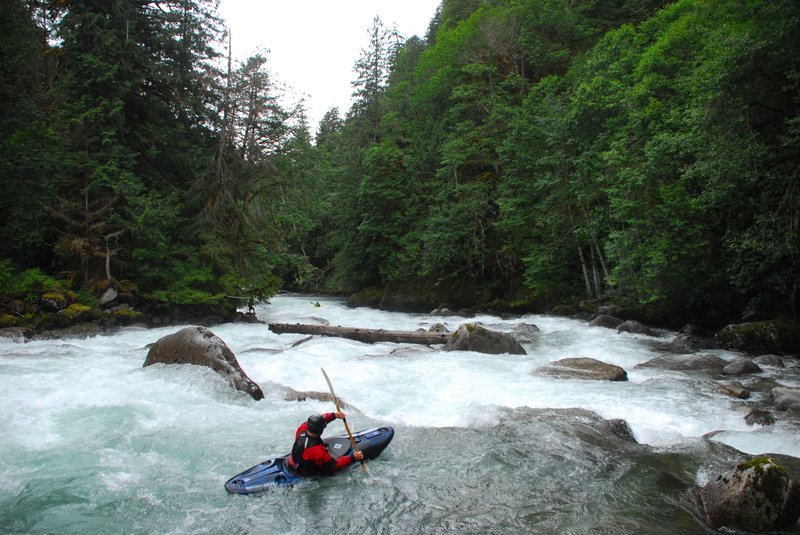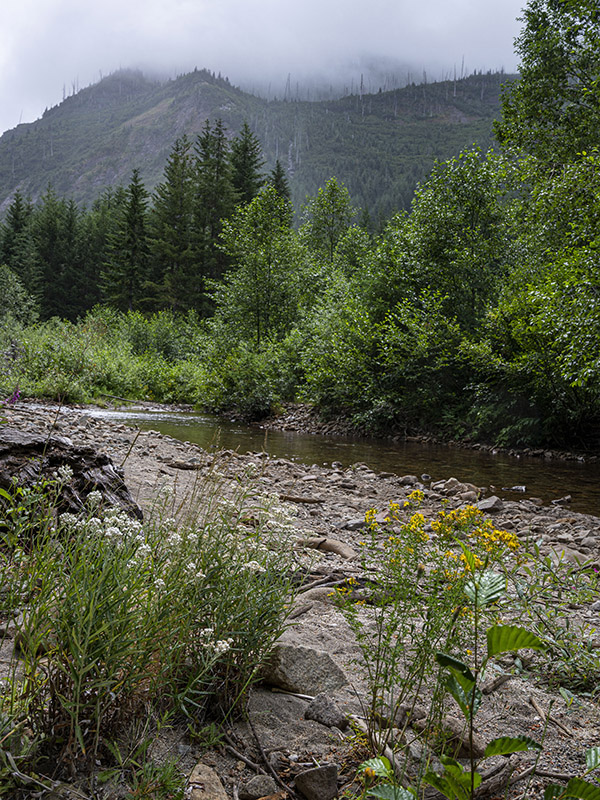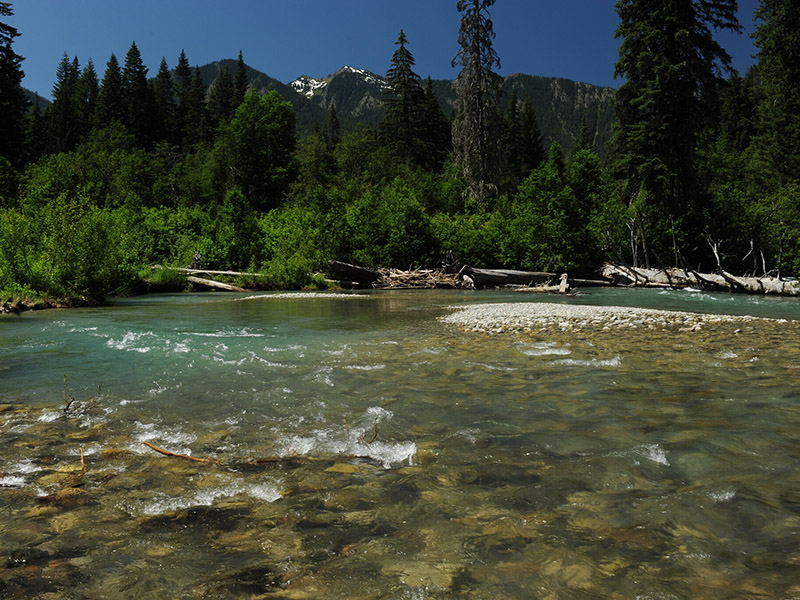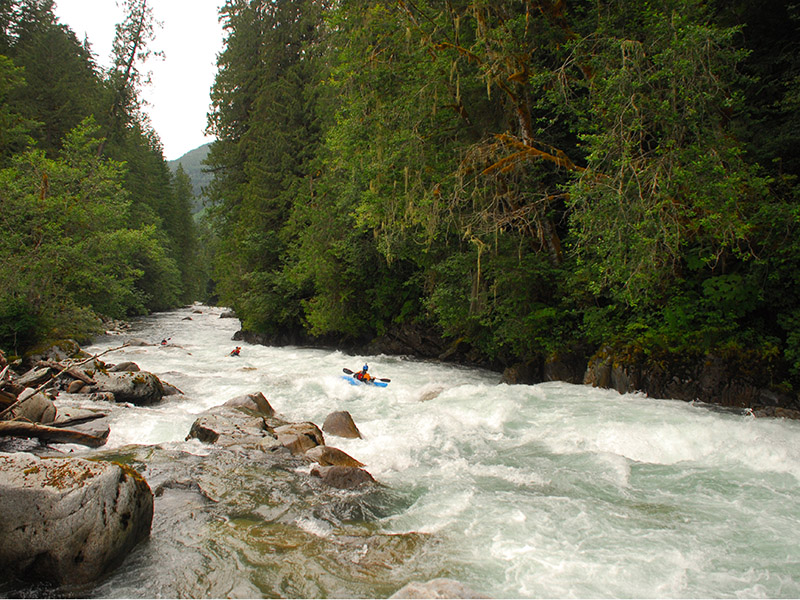
Photo credit: Thomas O'Keefe
Spend time in Washington, and you're likely to encounter one of the many cascading rivers, salmon-filled streams, or picturesque lakes in abundance. From the Puget Sound lowlands to the high desert, Washington has no shortage of water bodies valued for their unique recreational uses and the diversity of life they support.
For the first time, Ecology is starting a rulemaking to consider putting the unique and highest quality water into a special category of protection, by designating them as “Outstanding Resource Waters.” This designation, under Washington’s surface water quality standards, protects a water body from actions that could harm water quality.
Protection from water pollution
In practical terms, the Outstanding Resource Waters protections would minimize discharges, or could ban any new permitted discharges of pollution, depending on the level of protection we give. There are only limited exceptions to these rules, for temporary activities to protect public interest, to protect public health or property, or when the source of pollution comes from the air. Don’t worry, even with these extra protections in place, people are still allowed to recreate on or in the water.
We are considering this protection for a lake and three rivers:
- Soap Lake in Grant County
- The upper watershed of the Cascade River in Skagit County
- The upper watershed of the Green River (near Mount St Helens) in Lewis and Skamania counties
- The Napeequa River in Chelan County
Each of these water bodies are special and have unique features that may set them apart as an outstanding resource water.
This review is prompted by nominations we received in 2021
We received a nomination for Soap Lake and another nomination for the three rivers together. We reviewed each nomination and determined each met the initial criteria to move on to the next step in the process. Now, we'll be formally reviewing each nomination as part of the rulemaking process.
We shared during the 2021 Triennial Review process that we will conduct a public review of the nominations. We heard from over 50 organizations in support of moving forward with our review.
Meet the nominees
The Soap Lake Conservancy and Confederated Tribes of the Colville Reservation nominated Soap Lake as an outstanding resource water, under Tier III(B) protection.
Soap Lake
Soap Lake is one of Washington’s most unique lakes. No streams flow into or from the lake. Rather, the lake is the last of a series of lakes in the lower Grand Coulee Corridor. Mineral-rich water flows underground from each lake until finally arriving at Soap Lake. In fact, few lakes in the world have as many different minerals as Soap Lake. The lake is also several times saltier than the ocean!
From the nomination packet: “Scientist Pedro Dimitriu who discovered a new genus of bacteria in Soap Lake stated: “This lake is basically in the middle of the desert. Finding these new bacteria shows that rain forests aren’t the only sources of biodiversity that need to be protected. Soap Lake needs to be protected, and this will help prove it needs to be in the future.” (University Of Missouri-Rolla 2004)”
Soap Lake. Photo credit: Alison Gooding
A group of organizations, including Pew Charitable Trust, American Rivers, Cascade Forest Conservancy, Wild Salmon Center, American Whitewater, Washington Wild, and Trout Unlimited, nominated the three rivers for Tier III(A) protection.
Cascade River
From the nomination packet: "The Cascade provides one of the best settings in the state for whitewater kayaking."
Cascade River. Photo credit: Thomas O'Keefe
Green River
From the nomination packet: The Green River was spared the most severe impacts from the 1980 eruption of Mount St. Helens.
Green River. Photo credit: Cascade Forest Conservancy
Napeequa River
From the nomination packet: “The unique scenery draws hikers and mountain climbers. And because the Napeequa is so remote and inaccessible by road, it sees relatively light use — providing recreational users a rare opportunity for solitude.”
Napeequa River. Photo credit: Thomas O'Keefe
What are the levels of protection?
Under state water quality standards, water quality criteria provides desired conditions of water for human and aquatic uses. Part of the water quality standards includes antidegredation requirements. (Which means it’s easier to maintain quality, than have to fix it later.) Antidegredation provides the framework to not let water quality get worse, or degrade, while still protecting the uses around the water. Federal regulations set protections for water bodies under three levels, or tiers. These three tiers make up the antidegradation rules.
Tier I protects all existing and designated uses for all water bodies in Washington. Designated uses are the goals we set for a water, such as supporting fish, wildlife, or recreation. We protect existing and designated uses by establishing water quality criteria and using water cleanup plans to correct pollution problems.
Tier II applies to water bodies that have higher quality water than limits set by the water quality standards. Tier II protects these waterbodies from degradation, but allows degradation if a discharger can demonstrate it's in the overriding public interest to degrade the water and after identifying and applying feasible alternatives to degrading water quality.
Tier III is the highest level of protection for a waterbody and designates outstanding resource waters. A Tier III waterbody can be designated as Tier III(A), which prohibits any and all future degradation, and Tier III(B) which allows only minor degradation under certain conditions.
What’s next?
The first step in rulemaking is the development phase, which means we haven't yet drafted a proposed rule. Throughout 2022 and part of 2023, we'll meet with Tribes, stakeholders, and government agencies about the nominations to seek their ideas, concerns, and alternative approaches.
We plan to propose draft rule language, including the proposed list of outstanding resource waters, for comment in Summer 2023. At that time, we will host workshops and public hearings to seek more feedback. After evaluating the feedback we receive, we'll make decisions on the designations and other changes to the water quality standards.
To learn more about the rulemaking, visit our outstanding resource water rulemaking webpage.


